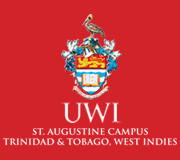Genomics
Fingerprinting Theobroma cacao germplasm trees (accessions) is done by extracting the genetic material (DNA) from the leaves of the cacao trees and assessing the DNA to obtain a genotype or genetic fingerprint. The DNA is assessed using specific reliable markers to reveal areas in the DNA that differ among accessions. These markers reveal microsatellite (SSR) differences or more recently single nucleotide polymorphism (SNP) differences. Fingerprinting is used to match the correct accession name to its correct trees. This ensures that accession and plot uniformity can be efficiently managed in the germplasm collection, the International Cocoa Genebank, Trinidad.
Fingerprinting is also a tool to characterise the variation existing within the collection and to "tag" (and follow the inheritance of) important phenotypic traits such as yield and disease resistance. Tagging traits with DNA markers helps produce better cocoa trees in accelerated breeding programs.
The objectives of the genomics section are to
- Identify mislabelling in the germplasm collection.
- Generate genetic fingerprints for each unique accession
- Create a fingerprint repository which can be used as the type profiles to curate other global germplasm collections.
- Resolve genetic history of cocoa germplasm and align accessions into their correct hierarchial groups.
- Identify the correct groups of accessions for taxonomic, agronomic, disease, nutracetical and flavor studies.
- Describe the genetic variability of trait expression.
- Develop molecular markers linked to important agronomic, nutraceutical and chocolate flavour characters.
- Provide a genetic analysis service to farmers and researchers who want to understand their on-farm, country or germplasm cocoa genetic diversity and use this information to improve their cocoa farming business.
Some of the main achievements of the team are
- One of the first successful association analysis studies in cacao. Several markers for various important agronomic traits including disease resistance and bean size were identified.
- First study to establish that cacao pulp chemistry varies among accessions and among genetic groups.
- First molecular study to establish proof-of-concept of adulteration of fine or flavour cacao from DNA markers on single cacao beans.
- First reported microsatellite study on wild Belizean Criollo cacao.
- First successful identification and application of cacao chloroplast DNA markers to trace maternal lineage.
- Participated in the International Cocoa Genome Sequencing Consortium, (one of two cocoa genome sequencing projects,) led by CIRAD. The cocoa genome sequence is available at CocoaGen DB.
- Identification of a SNP fingerprinting panel for efficient resolution of genetic identities and ancestries.
- First unequivocal confirmation of mixed ancestry (Upper Amazon, Lower Amazon and Criollo) of ICS cacao accessions.
- Shifted paradigm and provided better explanation for a centuries old mystery in cacao also known as the blast which decimated the industry in T&T.
- Extracted DNA from all the accessions of the ICGT as part of the Global Fingerprinting Project
- Conducted cacao genetic diversity studies in Dominica, Haiti, Jamaica and Uganda.
- Accession identification in the International Cocoa Genebank, Trinidad are being resolved on a continual basis.
- Best practices have been established for the extraction of quality DNA for characterisation using DNA markers.
- Provided training to visiting students, interns and other researchers in molecular techniques.

Fluidgm genotyping system
Selected publications
Fang, W., Meinhardt, L.W., Mischke S., Bellato, C.M., Motilal, L., and Zhang D. 2014. Accurate determination of genetic identity for a single cacao bean, using molecular markers with a nanofluidic system, ensures cocoa authentication. Journal of Agricultural and Food Chemistry 62: 481-487 doi: 10.1021/jf404402v, Web: 19 Dec 2013
Motilal, L.A., Zhang, D., Mischke, S., Meinhardt, L.W., Umaharan, P. 2013. Microsatellite-aided detection of genetic redundancy improves management of the International Cocoa Genebank, Trinidad. Tree Genetics & Genomes 9: 1395-1411. doi: 10.1007/s11295-013-0645-5.
Motilal, L.A., Sreenivasan, T.N. 2013. Birth of Trinitario cacao: History intertwined with myths and edaphic and climatic factors. In: Combating Climate Change: An Agricultural Perspective (eds. M.S. Kang and S.S. Banga). CRC Press, Taylor and Francis. Chapter 16, pp. 305-324.
Yang, J.Y., Scascitelli, M., Motilal, L.A., Sveinsson, S., Engels, J.M.M., Kane, N., Dempewolf, H., Zhang, D., Maharaj, K. and Cronk, Q.C.B. 2013. Complex origin of Trinitario-type Theobroma cacao (Malvaceae) from Trinidad and Tobago revealed using plastid genomics. Tree Genetics & Genomes 9: 829-840. doi 10.1007/s11295-013-0601-4.
Motilal, L.A., Zhang, D., Umaharan, P., Boccara, M., Mischke, S., Sankar, A., and Meinhardt, L.W. 2012. Elucidation of genetic identity and population structure of cacao germplasm within an international cacao genebank. Plant Genetic Resources: Characterization and Utilization 10: 232-241. doi: 10.1017/S1479262112000305
Motilal, L.A., Sreenivasan, T.N. 2012. Revisiting 1727: Crop failure leads to the birth of Trinitario cacao. Journal of Crop Improvement 26: 599-626. doi:10.1080/15427528.2012.663734
Motilal, L., Zhang, D., Umaharan,P., Mischke, B.S., Pinney, S.M., Meinhardt, L.W. 2011. Microsatellite fingerprinting in the International Cocoa Genebank, Trinidad: Accession and plot homogeneity information for germplasm management. Plant Genetic Resources. 9:430-438.
“The genome of Theobroma cacao” Nature Genetics Volume:43, Pages:101–108 (2011)
Zhang, D., Figueira, A., Motilal, L., Lachenaud, P., Meinhardt, L.W. 2011. Theobroma. In: Wild Crop Relatives: Genomics and Breeding Resources (ed. C. Kole), Springer-Verlag, Berlin. Chapter 13, pp. 277-296. doi 10.1007/978-3-642-21201-7_13
Motilal, L., Zhang, D., Umaharan, P., Mischke, B.S., Mooleedhar, V., Meinhardt, L.W. (2010). The relic Criollo cacao in Belize- genetic diversity and relationship with Trinitario and other cacao clones held in the International Cocoa Genebank, Trinidad. Plant Genetic Resources: Characterization and Utilization. Plant Genetic Resources 8: 106-115







